Portugal’s Natural Beauties
Following the success of the New 7 Wonders of the World, whose winners (resulting from a global poll) were announced in Lisbon, Portugal on 07.07.2007, other initiatives were launched in the same year, of which the New 7 Wonders Portugal, a nationwide competition focusing on Portugal’s natural beauty.
The competition is comprised of 21 finalists, divided into 7 categories: forests and woods, landscapes, grottos, caves and caverns, beaches and cliffs, maritime areas, inland aquatic zones and protected areas.
In terms of localization, 14 finalists are from the mainland, 5 finalists from the Azores and 2 from Madeira Islands. A map with the location of the 21 finalists (together with more pictures) can be found in the official site (where the voting takes place) shown here.
The award ceremony will take place in the Azores on September 11, 2010 at the Portas do Mar, a multipurpose venue that forms part of Ponta Delgada’s cruise ship terminal.
Forests and Woods
Floresta Laurissilva – Madeira Island *Awarded*
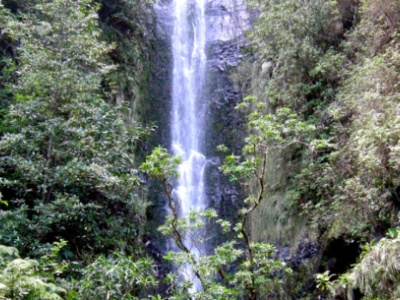 The Floresta Laurissilva (Laurissilva Forest), in the Autonomous Madeira Region is circumscribed mainly to the northern coast of the Madeira Island, in the Natural Park of Madeira and extends along 15.000 hectares (37,000 acres).
The Floresta Laurissilva (Laurissilva Forest), in the Autonomous Madeira Region is circumscribed mainly to the northern coast of the Madeira Island, in the Natural Park of Madeira and extends along 15.000 hectares (37,000 acres).
The name Laurissilva results from the conjunction of laurus (laurel in latin) and silva (bramble in Portuguese). The centennial trees, together with the existing flora and fauna create a great biodiversity with exclusive species.
Mata Nacional do Buçaco – Center Region
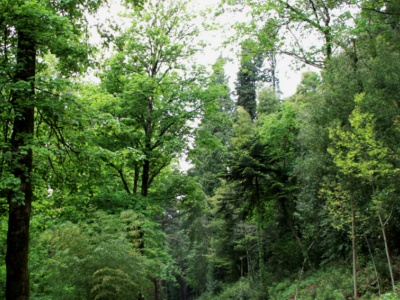 The Mata Nacional do Buçaco (Buçaco Woods) constitutes the country’s most precious arboretum. It remains in a pure state in an imposing natural environment.
The Mata Nacional do Buçaco (Buçaco Woods) constitutes the country’s most precious arboretum. It remains in a pure state in an imposing natural environment.
Paisagem Cultural de Sintra – Greater Lisbon Area
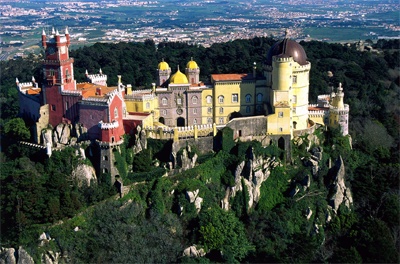 The historic architecture of Sintra with influences tracing back to the Moors and Romans, blends with exotic plants and dense vegetation that have been imported from many parts of the world and is classified as a UNESCO World Heritage Site.
The historic architecture of Sintra with influences tracing back to the Moors and Romans, blends with exotic plants and dense vegetation that have been imported from many parts of the world and is classified as a UNESCO World Heritage Site.
Landscapes
Paisagem Vulcánica da Ilha do Pico – Azores *Awarded*
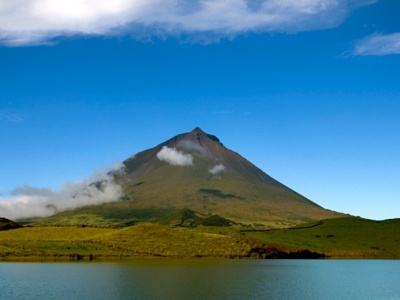 The mountain of Pico is the highest peak in Portugal and one of the biggest active volcanoes of the Atlantic Ocean, with 2.351meters (7,700 feet). It rises 3.500 meters(11,500 feet) from the bottom of the ocean and its conical format is the most obvious indication of a volcanic origin which gave the island its name. The geological wealth associated with the exquisite landscape, make the Pico mountain in the Archipelago of the Azores one of the most beautiful volcanoes in the World.
The mountain of Pico is the highest peak in Portugal and one of the biggest active volcanoes of the Atlantic Ocean, with 2.351meters (7,700 feet). It rises 3.500 meters(11,500 feet) from the bottom of the ocean and its conical format is the most obvious indication of a volcanic origin which gave the island its name. The geological wealth associated with the exquisite landscape, make the Pico mountain in the Archipelago of the Azores one of the most beautiful volcanoes in the World.
Parque Natural da Arrábida – Lisbon and Valley of the Tagus
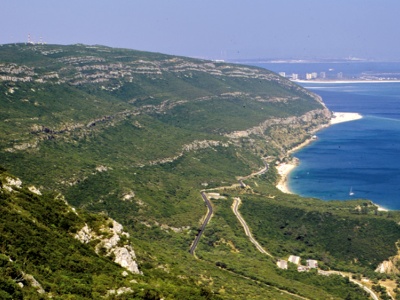 Along the coast, between Setúbal and Sesimbra, the Natural Park of the Arrábida is an area that contains a varied set of natural, historical and cultural values. The imposing figure of the Arrábida, allows a panoramic scene of picturesque beauty with the lush green vegetation and the chalk white face of the cliffs.
Along the coast, between Setúbal and Sesimbra, the Natural Park of the Arrábida is an area that contains a varied set of natural, historical and cultural values. The imposing figure of the Arrábida, allows a panoramic scene of picturesque beauty with the lush green vegetation and the chalk white face of the cliffs.
Vale Glaciar do Zêzere – Serra da Estrela
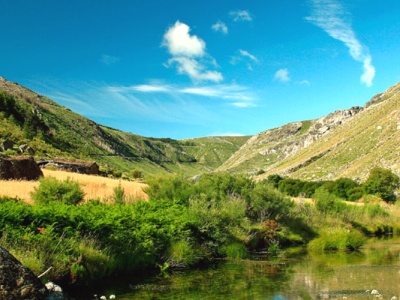 The Glacial Valley of the Zêzere is integrated in the Serra da Estrela Natural Park, located in the largest mountain range in Portugal, and extends along 13 kms (8 miles) of incomparable geological beauty.
The Glacial Valley of the Zêzere is integrated in the Serra da Estrela Natural Park, located in the largest mountain range in Portugal, and extends along 13 kms (8 miles) of incomparable geological beauty.
Grottos, Caves and Caverns
Algar do Carvão – Terceira Island / Azores
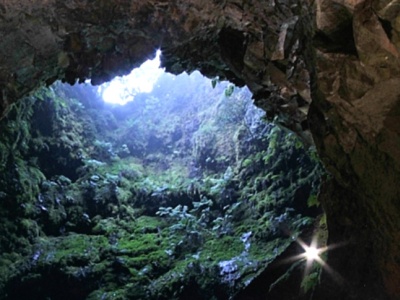 Algar do Carvão (coal grotto) located in the central zone of the Terceira Island, in the caldera of Guilherme Moniz, with its 15 km (9 mi.) perimeter, is the biggest caldera of the Archipelago of the Azores. With an approximate altitude of 550 meters (1,800 feet), it is one of the most peculiar volcanic cavities in the world.
Algar do Carvão (coal grotto) located in the central zone of the Terceira Island, in the caldera of Guilherme Moniz, with its 15 km (9 mi.) perimeter, is the biggest caldera of the Archipelago of the Azores. With an approximate altitude of 550 meters (1,800 feet), it is one of the most peculiar volcanic cavities in the world.
Furna do Enxôfre – Ilha Graciosa / Azores
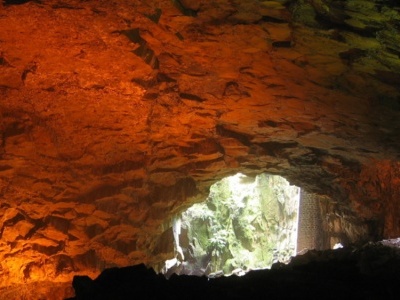 The Furna do Enxôfre (Cavern of Sulphur) is located in the Ilha Graciosa, the second smallest island of the Azores and is a singular geological phenomenon of volcanic origin. The caldera is a circular depression with 1.600 meters of diameter (5,250 feet) and 350 meters (1,150 feet) deep, in the point where before stood the top of the volcano which formed the Ilha Graciosa. The region has numerous thermal springs and solfatares, including some in the cavern.
The Furna do Enxôfre (Cavern of Sulphur) is located in the Ilha Graciosa, the second smallest island of the Azores and is a singular geological phenomenon of volcanic origin. The caldera is a circular depression with 1.600 meters of diameter (5,250 feet) and 350 meters (1,150 feet) deep, in the point where before stood the top of the volcano which formed the Ilha Graciosa. The region has numerous thermal springs and solfatares, including some in the cavern.
Grutas de Mira d’Aire – Central Region *Awarded*
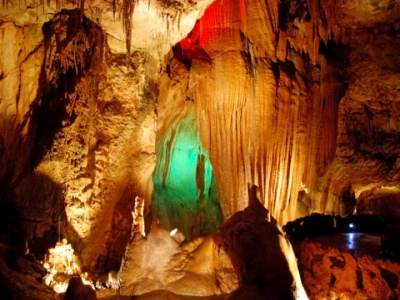
The Grutas of Mira d’Aire (Mira d’Aire caves), 85 km (53 mi.) North East of Lisbon and in the vicinity of Fátima, besides their natural beauty, are Portugal’s largest cave system, with a public access of 700 meters (2,300 feet) in extension of the total 11km(7 mi.) that compose them. The beauty and ecological importance of these caves, make them a place of incontestable tourist attraction and speleological interest.
(the next post will cover the categories “Beaches and Cliffs”, “Maritime Areas”, “Inland Aquatic Zones” and “Protected Areas”).
Image Credits (the file names identify their source): 7maravilhas.sapo.pt, imagesofportugal.com, golisbon.com

{ 3 comments… read them below or add one }
You can check here the natural wonders http://algarveview.hubpages.com/hub/Portugals-Seven-Natural-Wonders
i am portuguese and i like veru much this site
(i don´t writte great) LOL
Thanks for your comment, Ruben. I appreciated.
{ 3 trackbacks }